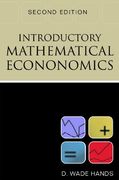please help with all questions
Question 6 2.3 pts 6. What letters represent this country's tariff revenue collected (in this market)? jn. m+n+r mr. Question 7 2.3 pts 7. If a "small\" country (i.e., one that has no inuence over the world price of the good it imports) moves from having an import tariff on good X to free trade (i.e., removing the import tariff on good X (that it indeed importsl), then in the market for good X 0 domestic consumers will lose more than the government and domestic producers (combined) will gain. IA. domestic buyers will be worse off. A. the price domestic buyers pay for imports will only go down by part of the tariff. A domestic producers will be better off. A there can be a net gain to the country. \f8. Consider the following isoquant-isocost graphs. Which of the following can you say about them? 433q8grph.png The production functions exhibit constant returns to scale. Good X is relatively capital intensive. Good Y is relatively capital intensive.The production functions exhibit constant returns to scale. Good X is relatively capital intensive. Good Y is relatively capital intensive. The production functions exhibit increasing returns to scale. The production functions exhibit decreasing returns to scale. Question 9 2.3 9. Which of the following is the statement of the Heckscher-Ohlin Theorem? A change in output prices will lead to more-than-proportional changes in the same direction in the prices of inputs used intensively in the good's production. Opening trade will equalize factor prices across countries. A change in output prices will lead to less-than-proportional changes in the same direction in the prices of inputs used intensively in the good's production. A change in output prices will lead to more-than-proportional changes in the opposite direction in the prices of inputs used intensively in the good's production. A country has a comparative advantage in the good that makes relatively intensive use of that country's relatively abundant factor.10. In the Heckscher-Ohlin framework, suppose that the auta rkic wage in countryA is wA = $20 and the autarkic rental price of capital is rA = $40. In country B (with monetary values expressed in $ for purposes of comparison), the autarkic wage is wB = $15 and the autarkic rental price of capital is n; = $45. Also, suppose that good X is labor intensive and good Y is capital intensive. Then we can say that countryA has a comparative advantage in good X, and the wage in country A will rise upon moving from autarky to free trade. the absolute wages (w), expressed in the same currency, will move further apart upon moving from autarky to free trade. the absolute rental prices of capital (r), expressed in the same currency, will move closer together, but not equalize upon moving from autarky to free trade. the relative wages (w/r) will equalize, but not the absolute wages (expressed in the same currency} upon moving from auta rky to free trade. country B has a comparative advantage in good X, the rental price of capital in country B will fall upon moving from autarky to free trade











